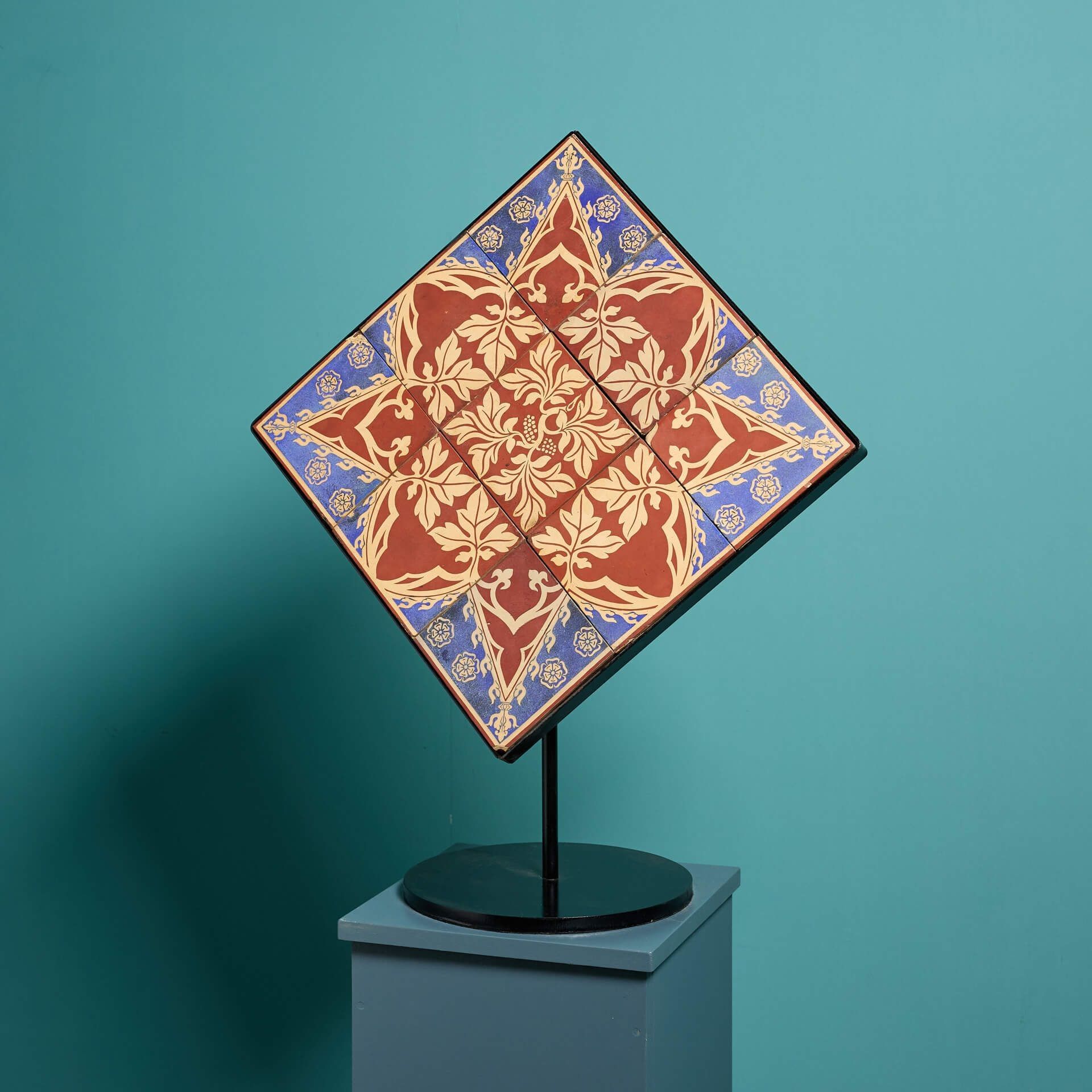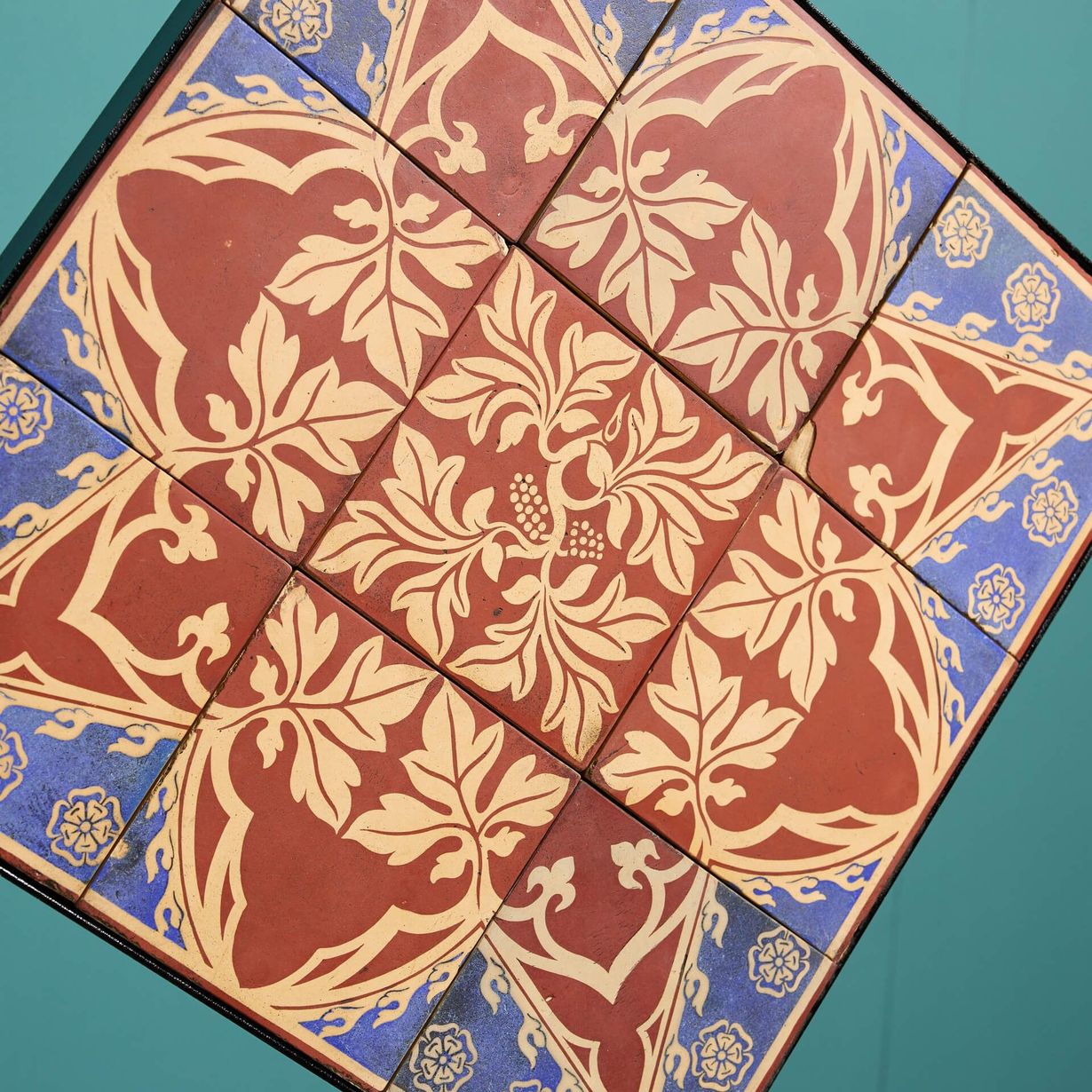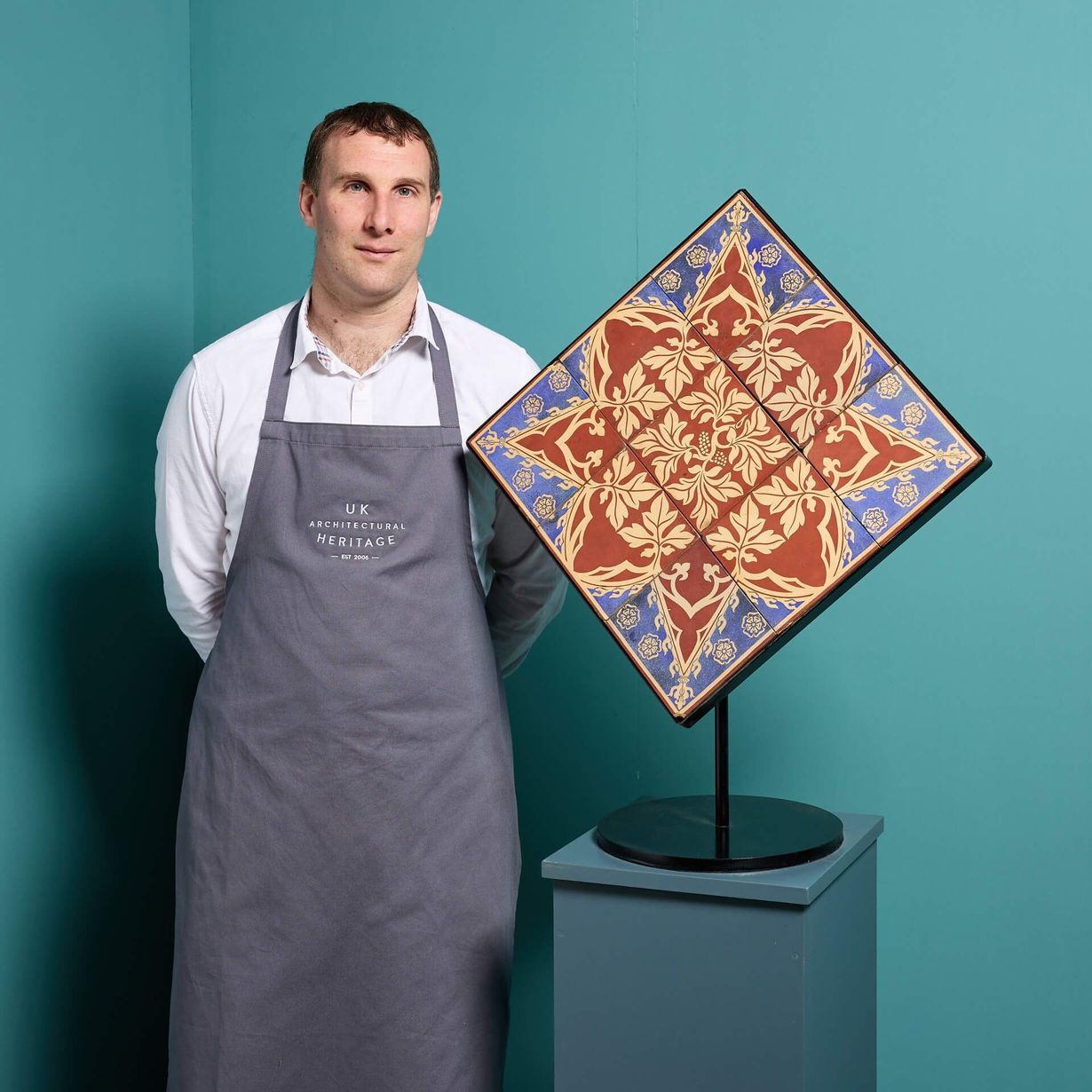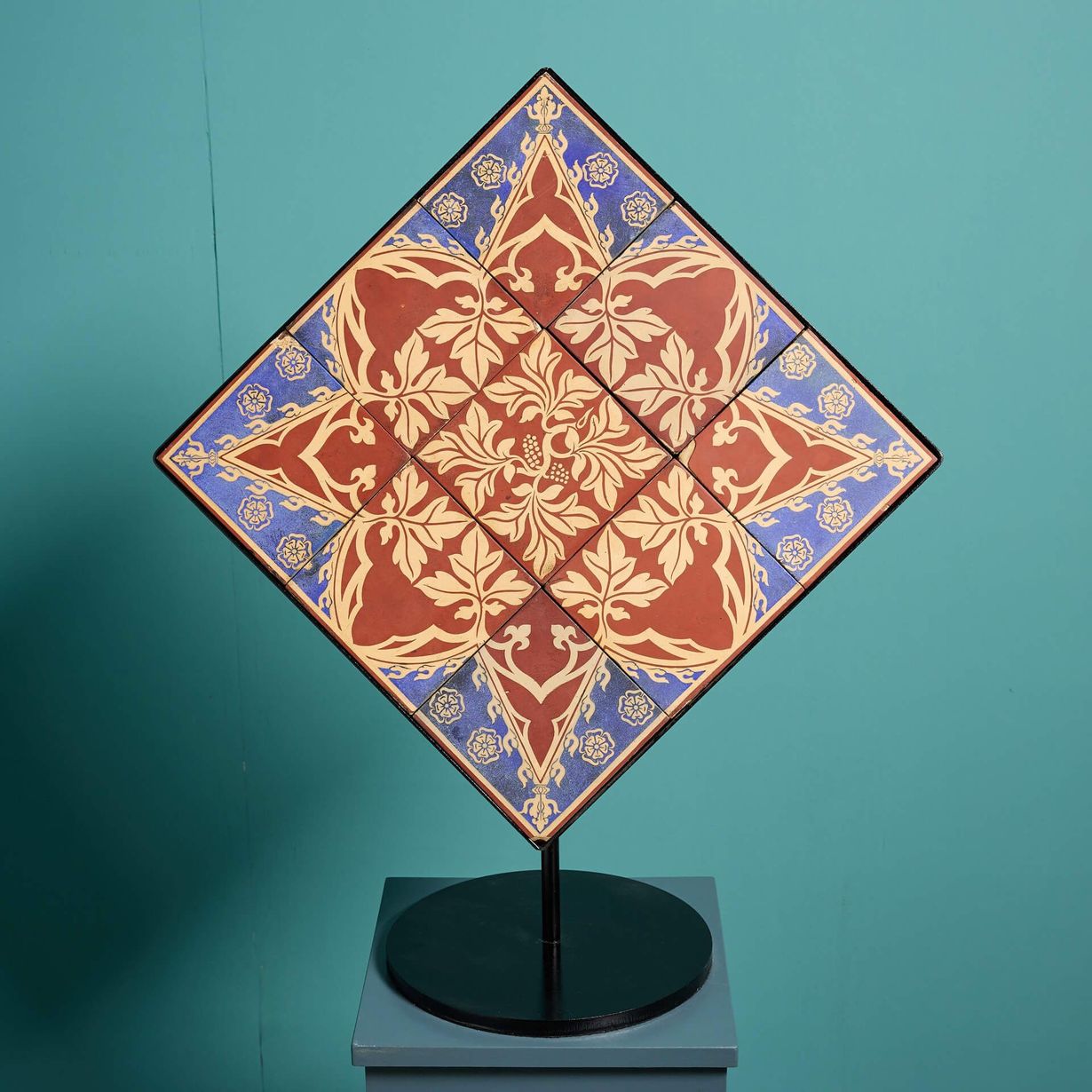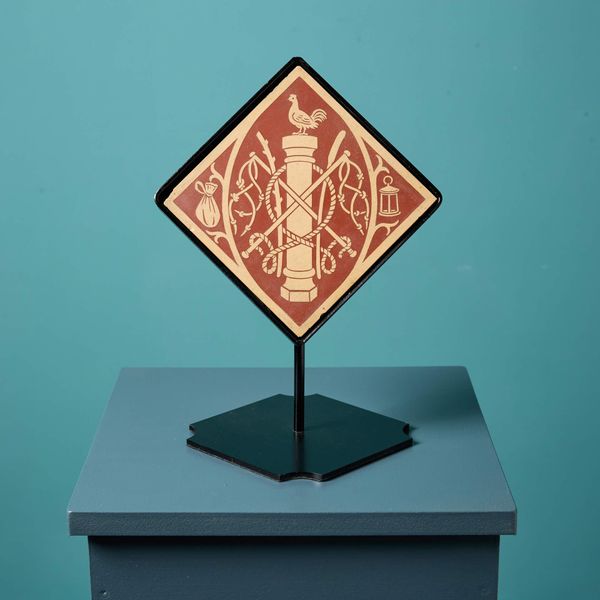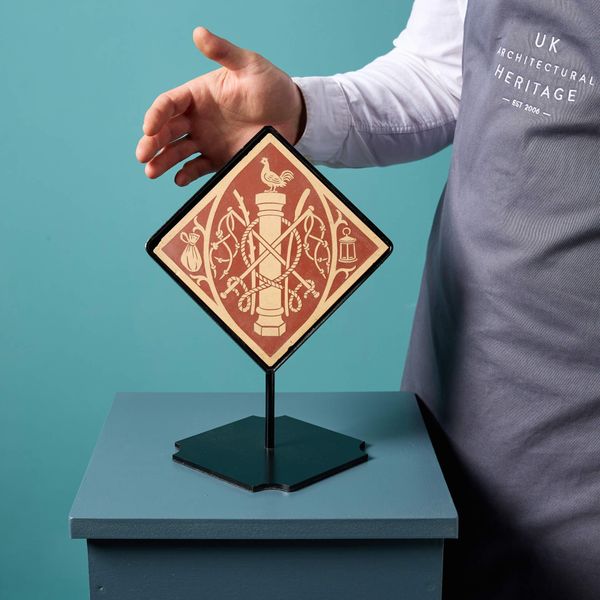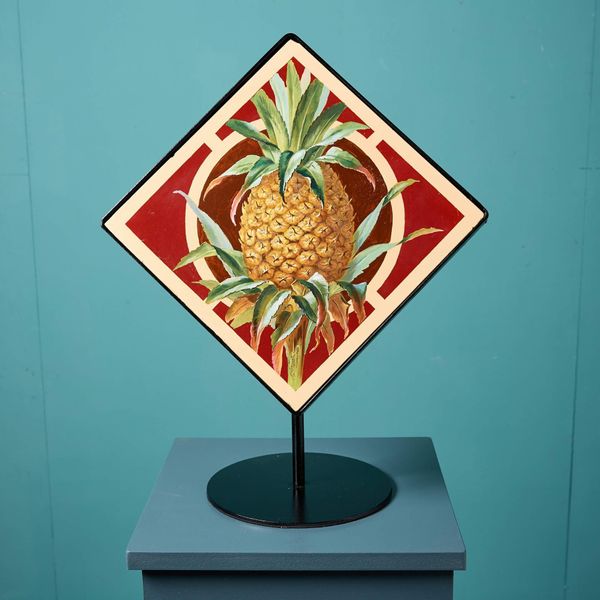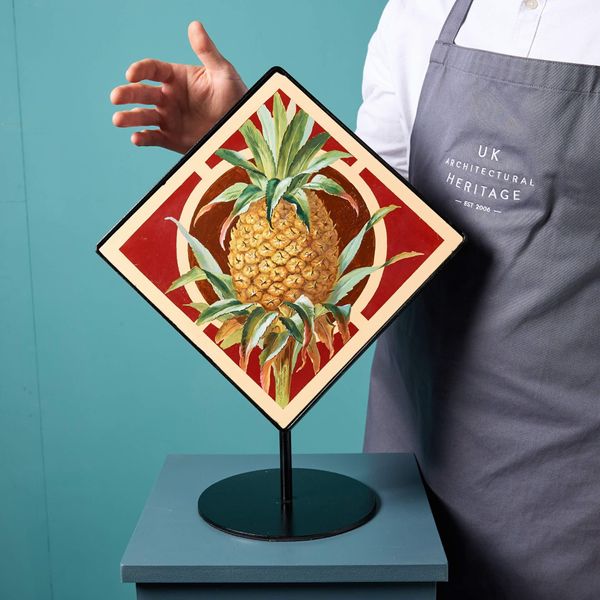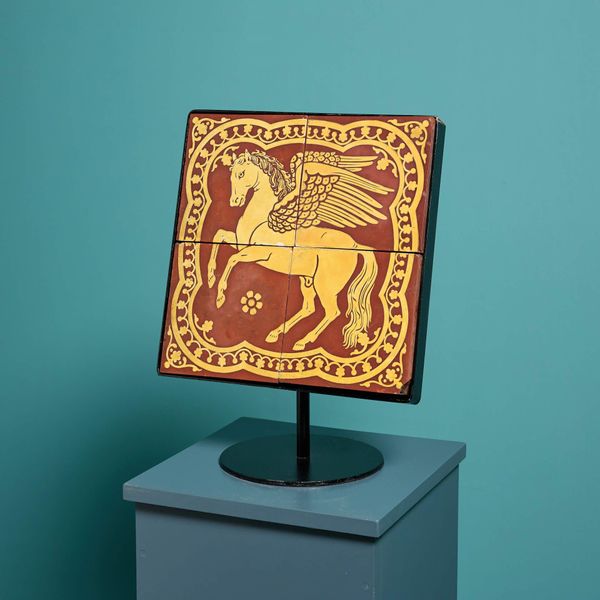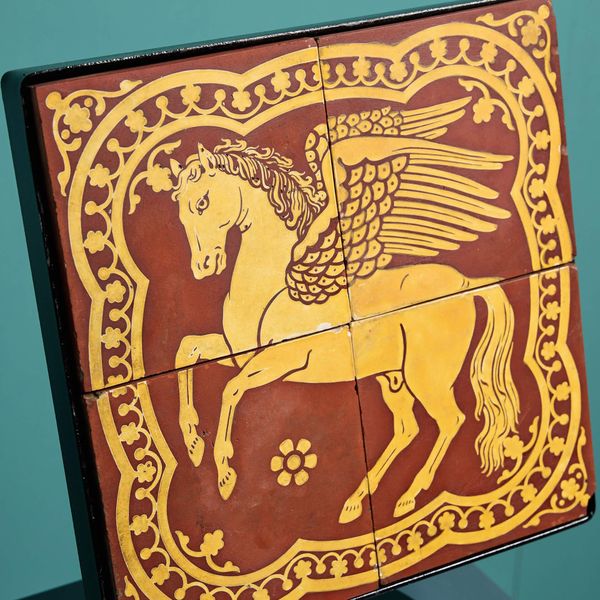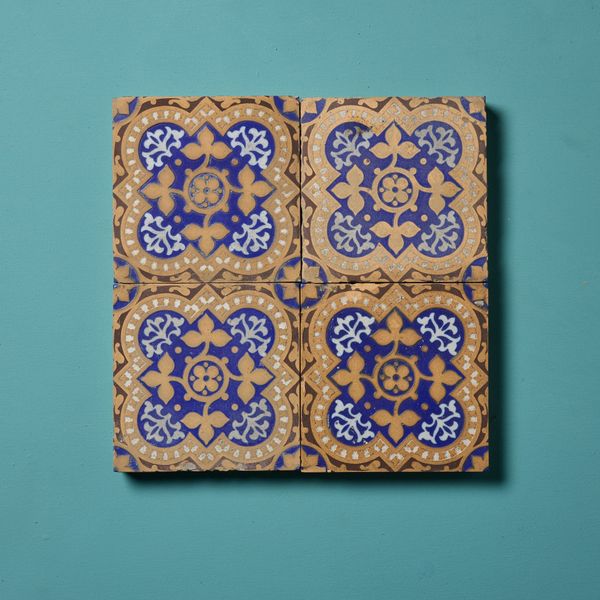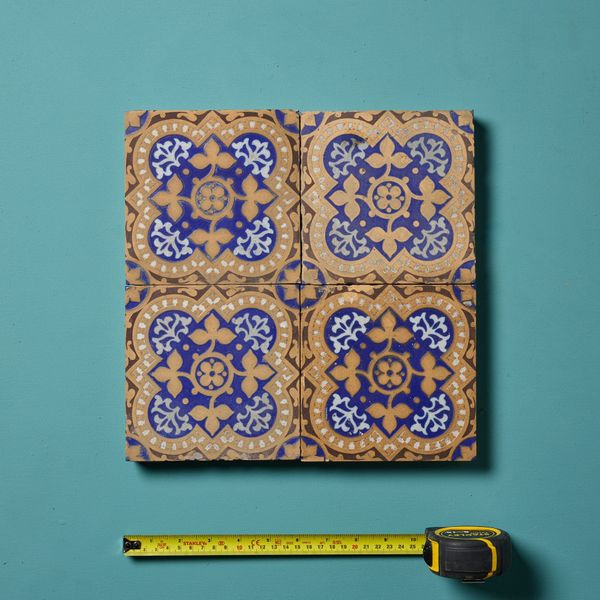About this piece
back to topA set of nine 6-inch by 6-inch neo-medieval encaustic tiles by Minton & Co (stamped); an exact match to an identical set in the British Museum attributed to architect and designer, A. W. N. Pugin, circa 1850.
Together, the nine encaustic tiles form a large decorative panel of red, blue and buff tones depicting a lozenge pierced by a four-point star and further detailed with vine leaves, grapes and Tudor roses. They are displayed in a bespoke steel stand included as pictured, making them perfect for interior display.
According to the British Museum, similar tile examples are found in Pugin-designed churches across the UK including St. Mary’s Church in Shrewsbury.
Minton & Pugin
To this day, Minton & Co. are considered one of the major pottery and porcelain manufacturers of British history. Established in 1793, the company was founded by Thomas Minton (1765 – 1836) in Stoke-on-Trent. Until 1845, the pottery manufacturers traded under various styles before adopting the ‘Minton’ name.
English architect, Augustus Welby Northmore Pugin (1812-1852), designed many encaustic tiles in gothic and neo-medieval themes for churches and religious buildings across England and further afield. It is well known that Minton was the architect’s manufacturer of choice, commissioning the company to create tiles for one of his most prestigious projects: the Palace of Westminster and its famous clock tower.
Additional Dimensions
Comprises of nine 6-inch by 6-inch tiles, ¾ inch depth
Base: ø28.5 cm
